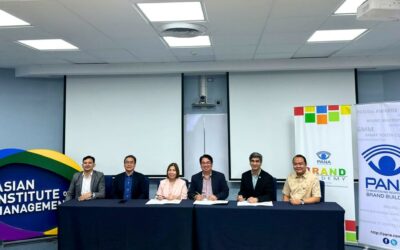The Retail Landscape: How’s the shopping?
Look around and you will perhaps notice how traffic is boosting convenience stores sales. Add to that restaurant and quick service food outlets. Your observations would be right. At the recent PANA event, Nielsen Philippines presented the numbers on how these entities: traffic, eating, buying and shopping are inextricably intertwined, and in face, feed on each other’s growths.
Before the fanfare, however, let’s check out the numbers. The Philippine GDP is growing. Where it usually goes south on Q2—Q-to-Q since Elections 2007—that was not the case in the Elections of 2016.
In fact, Nielsen’s Consumer Confidence numbers for Q3 2016 show Filipinos at a high, where the Philippines at 132 points is second only to India at 133. That’s 10 points clear of Indonesia at 3rd place.
“PH continues confidence due to availability of more jobs and increased optimism in spending and personal finances.” – Nielsen
Supporting the data show:
- FMCG continues its growth, with non-food at the lead.
- Industry and services are likewise doing well.
- Agriculture growth has been impacted by El Niño.
- Household is growing strong at 7%
A. FMCG’s continuing growth is being fueled by the said optimism and consumer confidence. According to Nielsen:
I. PH exceeds targets for GDP growth
- Philippines remains to be one of the fastest growing economies in Asia with its 7.1% GDP growth for Q3 2016 – well above the 6-7% GDP targets
- Growth boosted by gains in Industry and the turnaround of Agriculture for the Supply Side with Investments growing fast for the Demand Side
- Economic performance also supported by low inflation, low interest rates, and better labor market conditions
According to Nielsen, “Inflation is under control. The Peso continues to depreciate against the US Dollar. But, as long as we maintain low oil and low peso this means more money to spend, the dollars being brought in by OFW dollars. The currency has weakened, but this is not unique to the Philippines as ASEAN currencies are also depreciating.”
II. Filipinos remain positive
- Philippines maintains confidence level while being the 2nd most confident country in Asia Pacific and across the globe
- Filipinos continue optimistic outlook on Job Prospects, Personal Finances, and being able to spend for needs
As Nielsen explains, “The Philippines is optimistic because of the new administration, a new economy, meaning consumers are willing to spend. Their outlook on their financial situation is good.”
III. FMCG Posts Consistent Growth
- Growth seen across regions YTD SEP16.
- Growth of Food is led by Beverages and Confectionery/Snacks while Non-Food growth is driven by Cigarettes
Retail is the path for the consumer to reach a need or want. Consumers need and want fast, and easy. The reality is, convenience is not a store—it is a consumer need.
Nielsen’s presentation includes Three myths—‘dangerous retail myths’ that are:
I. Myth 1: Bigger is better
- Today’s shoppers are constantly on the go thereby creating growth for convenience stores and other small formats.
- Stores that offer one-stop shopping or are easier to get to have grown in popularity. More people are eating out because time strapped shoppers choose ready-to-eat meals. Convenience stores are not a format – It’s a lifestyle.
- Significant room for more growth. Convenience stores can easily double or triple growth, due also to smart goods selling. Some convenience stores now sell veggies and food items in food packs for 2 to 3 people, tailor-fitting for single, or small families. Such stores remove the need to go to the supermarket.
Myth 2: Saying goodbye to retail stores
- Traditional stores will not go away, and will actually thrive. In emerging markets, the growth of traditional stores is at 38% for Asia Pacific second only to Africa and Middle East at 42%. Numbers show that visits to traditional stores average 28 per month.
“Traditional stores continue to thrive by being close to their consumers, focused in their assortment, and responsive.”
III. The grocery space doesn’t need to worry about eCommerce because people won’t buy food online
- With 37% of the urban population with access to smartphones, mobile is eclipsing web for many emerging markets. People are going straight to mobile, bypassing the internet.
- Despite less than 10% showing that they will buy online—they view that eComm is very important.
- Web-rooming, that is viewing items online before visiting the physical showroom, have people buying offline. People research online, but buy from retail stores.
“92% of Filipinos use the internet daily, and 9 out of 10 people still go physical shopping. For the Philippines, the challenges can be logistics in nature, i.e. Consumers want delivery NOW! Another challenge is that only 7% of the population have credit cards, prompting eCommerce sites like Lazada to offer cash-on-delivery.”






